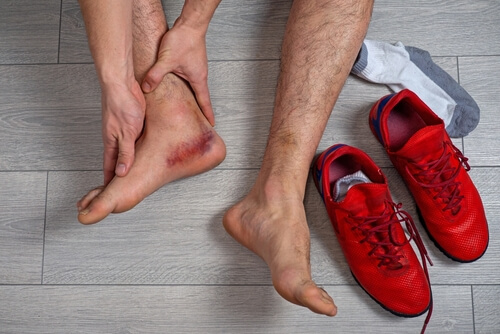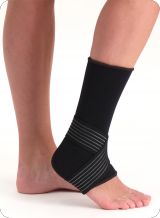Dislocated ankle
An ankle dislocation involves damage to the ankle joint and often affects the ankle ligaments and surrounding structures, such as nerves and blood vessels. Bone fractures may be present in a dislocated ankle. This is a serious ankle injury, and it is important to get to the emergency room quickly. Are you curious about more information, such as its causes and treatment? Then feel free to read on. We are happy to explain.
What is the cause?
The cause of a dislocated ankle is usually an ankle sprain in which one or more ankle ligaments rupture. This is often seen in athletes who suddenly change walking direction, land on an uneven surface after a jump, or land incorrectly in a duel with an opponent.
Furthermore, an ankle dislocation can also come from a traffic accident or a fall from a great height. You are more likely to have a dislocated ankle if you have had a previous ankle dislocation. This is because in this case, the strength and stability of the ankle is reduced.
Symptoms of an ankle dislocation
There are several complaints and symptoms you may experience with an ankle dislocation:
- Severe pain
- The ankle becomes swollen, blue and warm
- There is a substantial misalignment of the foot and ankle
- Movement of the ankle/foot is not possible
- Bruising and swelling around the ankle joint
- Sometimes there are sensory and circulatory disturbances in the foot

Treatment of a dislocated ankle
If there is a dislocated ankle, there is also a possibility that the ankle is broken. An X-ray should therefore be taken. The ankle needs to be repositioned by a specialist. This must be done accurately to avoid causing more damage to surrounding structures (such as blood vessels and nerves).
Recovery
Once the ankle is back in the correct position and there is no fracture, it is important to move the ankle gently again. Excessive strain, however, is not good. For this, you can use crutches, for example. You can also wear an ankle brace to ensure stability and relieve some of the strain on the ankle. As soon as it is possible to strain the ankle again, it is important to make it stronger and more stable. You can do this by doing exercises. Recovery usually takes several weeks to months.











